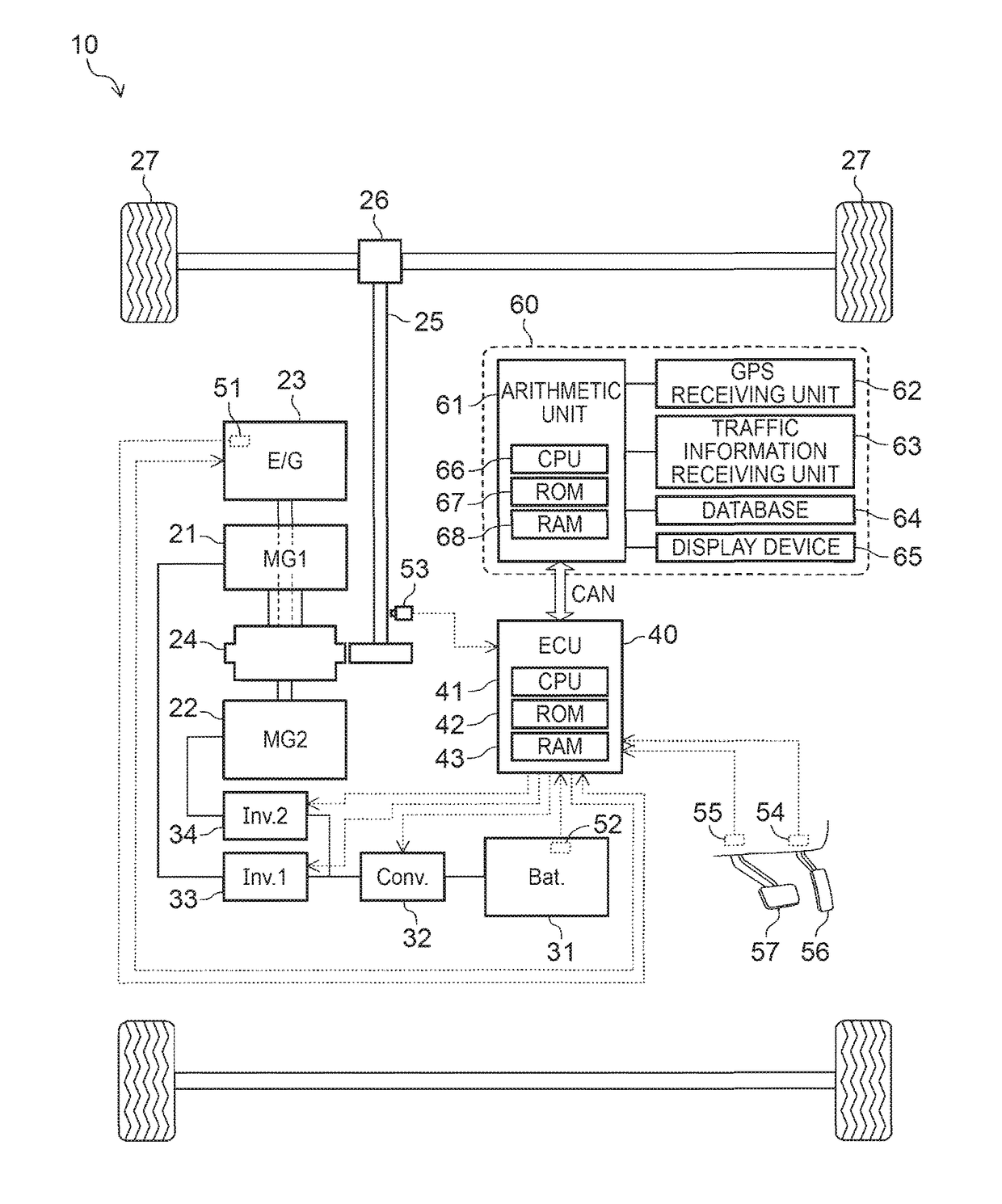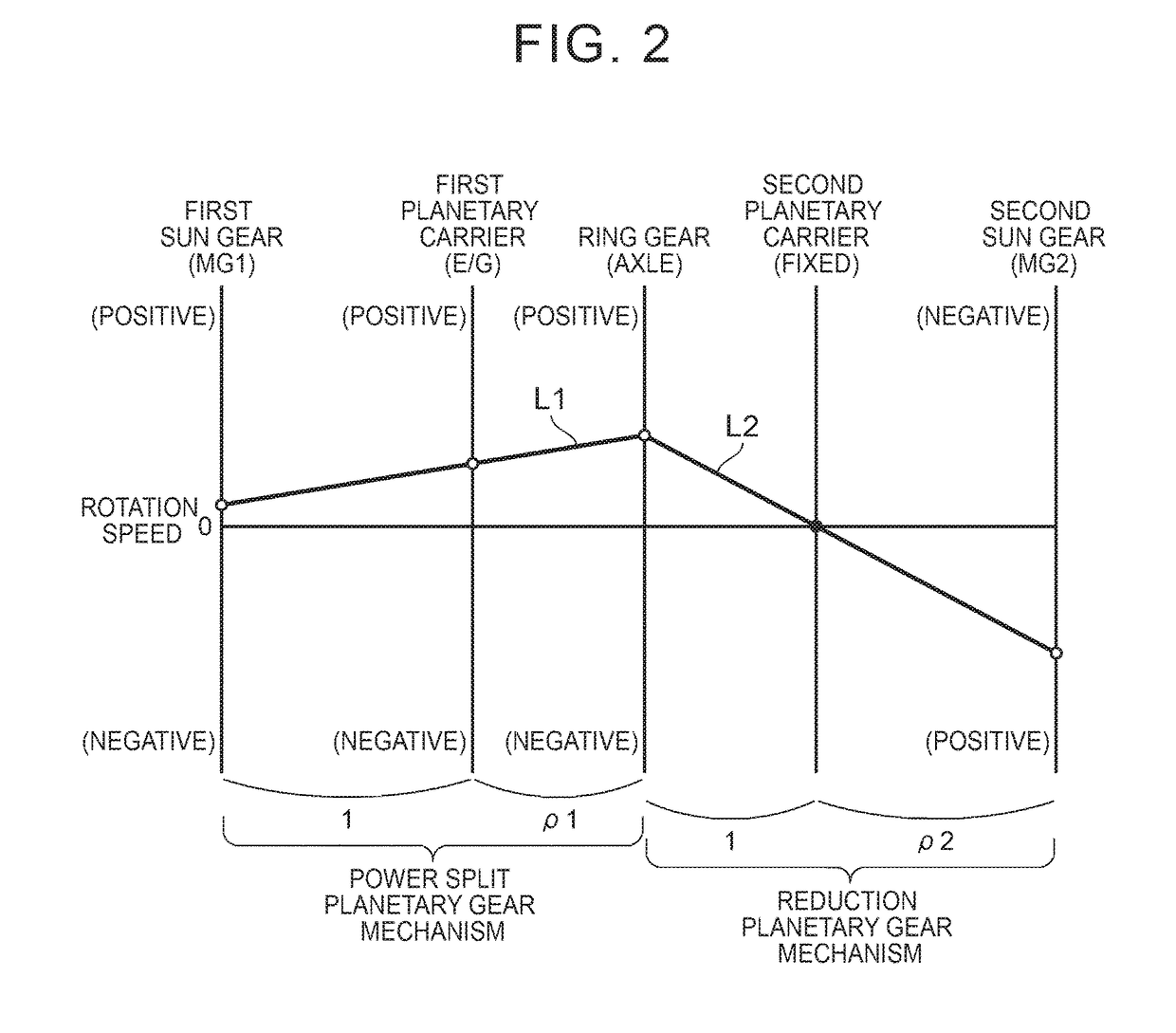Control apparatus for hybrid vehicle
a control apparatus and hybrid technology, applied in the direction of battery/fuel cell control arrangement, engine-driven generators, transportation and packaging, etc., can solve the problems of low engine operation efficiency, deterioration of fuel consumption, and inability to increase the remaining amount of charge so
- Summary
- Abstract
- Description
- Claims
- Application Information
AI Technical Summary
Benefits of technology
Problems solved by technology
Method used
Image
Examples
case 1
th
[0130]In the case where the required engine output power Pe* is larger than the output power threshold Peth, the CPU makes an affirmative determination in step 720, proceeds to step 725, and determines whether the engine 23 is stopped at the current point in time. When the engine 23 is stopped, the CPU makes an affirmative determination in step 725, proceeds to step 730, and executes the process of starting the operation of the engine 23. Subsequently, the CPU proceeds to step 735. In contrast, when the engine 23 is in operation, the CPU makes a negative determination in step 725, and directly proceeds to step 735.
[0131]The CPU sequentially executes the processes of step 735 to step 760 described below. After that, the CPU proceeds to step 795, and once ends the routine.
[0132]In step 735, the CPU determines a target engine rotation speed Ne* and a target engine torque Te* such that the output power equal to the required engine output power Pe* is output from the engine 23 and the ...
case 2
th
[0138]In the case where the required engine output power Pe* is smaller than or equal to the output power threshold Peth, when the CPU proceeds to step 720, the CPU makes a negative determination in step 720, proceeds to step 765, and determines whether the engine 23 is in operation at the current point in time.
[0139]When the engine 23 is in operation, the CPU makes an affirmative determination in step 765, proceeds to step 770, executes the process of stopping the operation of the engine 23, and then proceeds to step 775. In contrast, when the engine 23 is stopped, the CPU makes a negative determination in step 765, and directly proceeds to step 775.
[0140]In step 775, the CPU sets the value of the target MG1 torque Tm1* to zero. In addition, the CPU proceeds to step 780, and calculates the target MG2 torque Tm2* that is a torque that should be generated by the second electric motor 22 in order to bring the torque that acts on the ring gear into coincidence with the required ring ...
PUM
 Login to View More
Login to View More Abstract
Description
Claims
Application Information
 Login to View More
Login to View More - R&D
- Intellectual Property
- Life Sciences
- Materials
- Tech Scout
- Unparalleled Data Quality
- Higher Quality Content
- 60% Fewer Hallucinations
Browse by: Latest US Patents, China's latest patents, Technical Efficacy Thesaurus, Application Domain, Technology Topic, Popular Technical Reports.
© 2025 PatSnap. All rights reserved.Legal|Privacy policy|Modern Slavery Act Transparency Statement|Sitemap|About US| Contact US: help@patsnap.com



